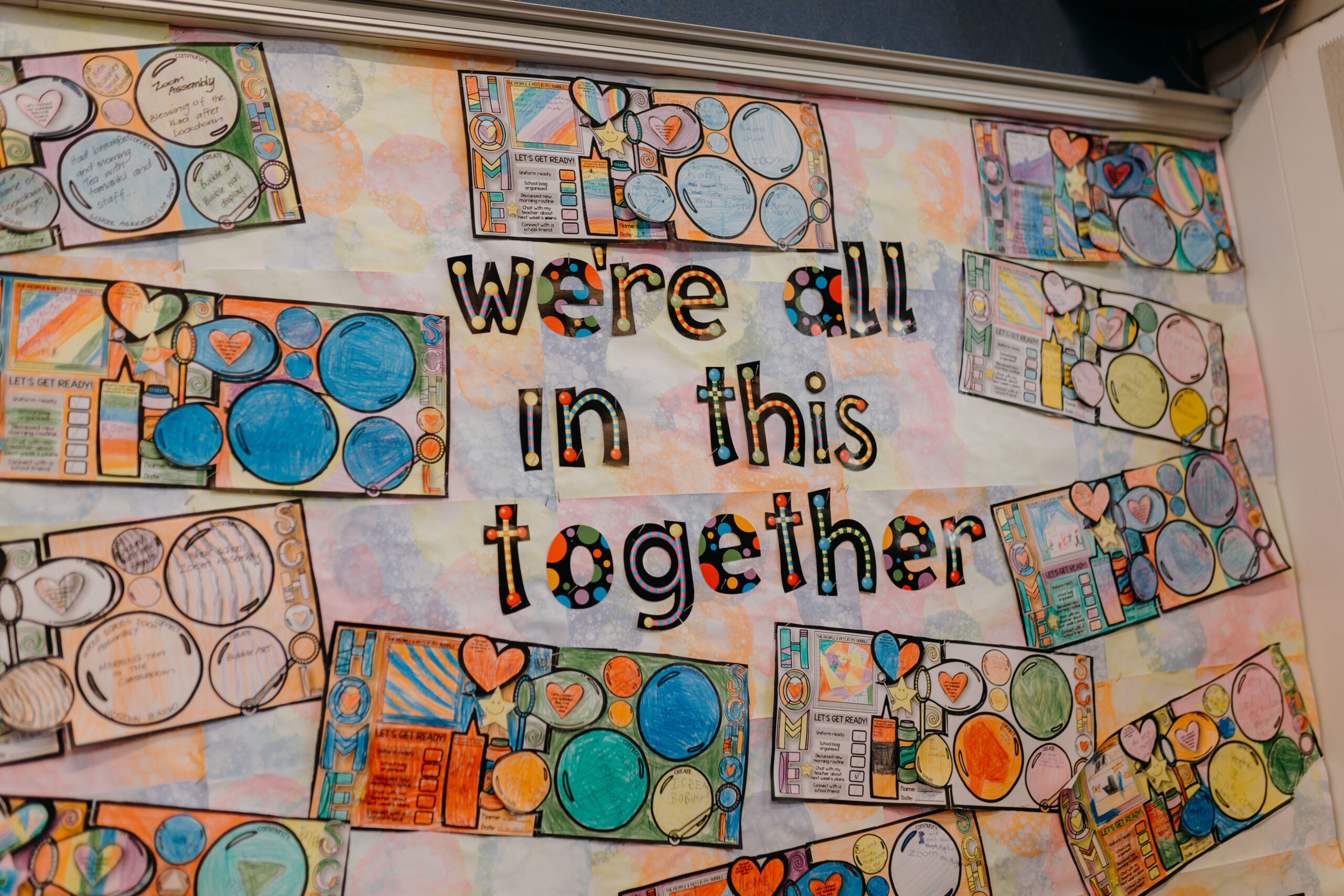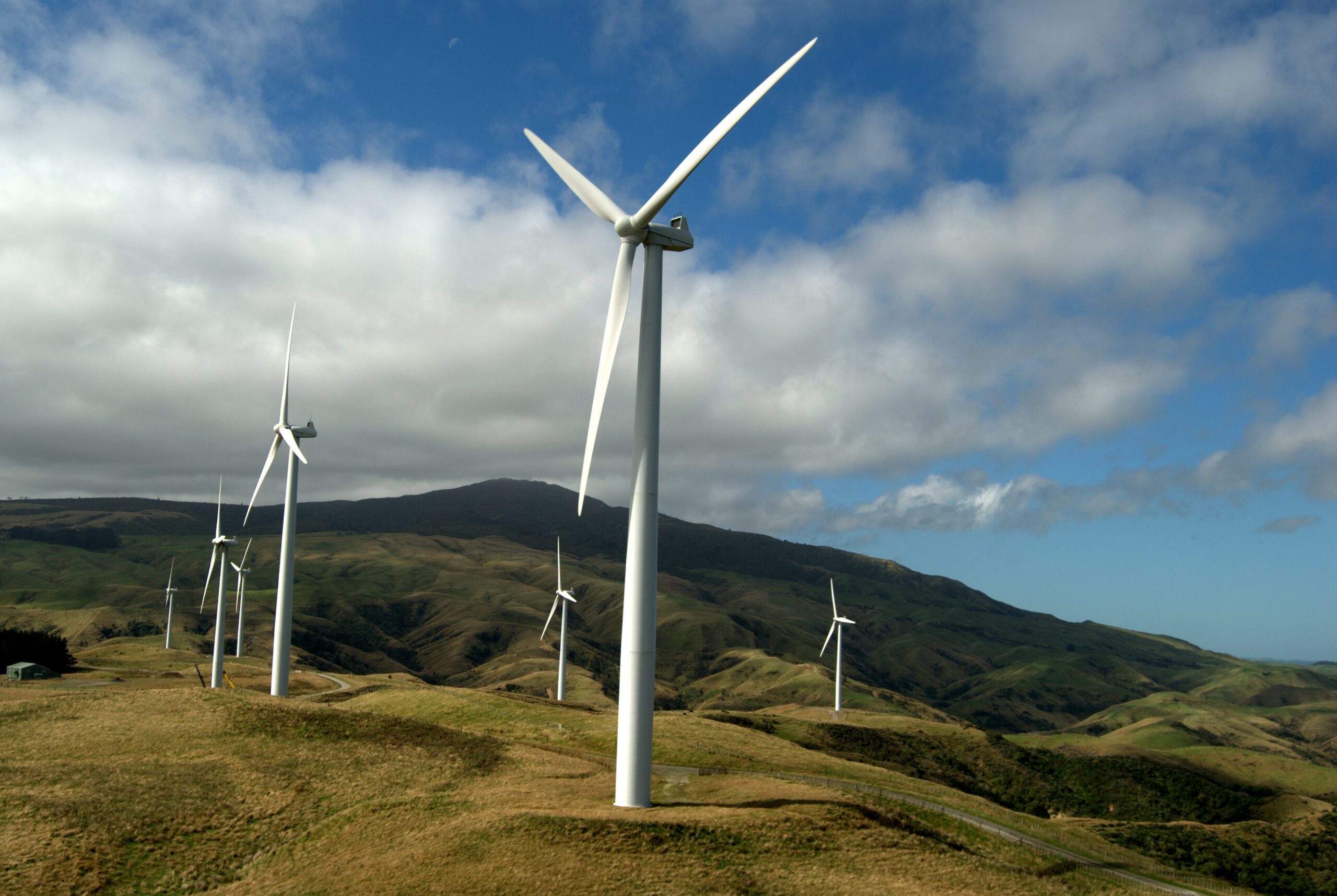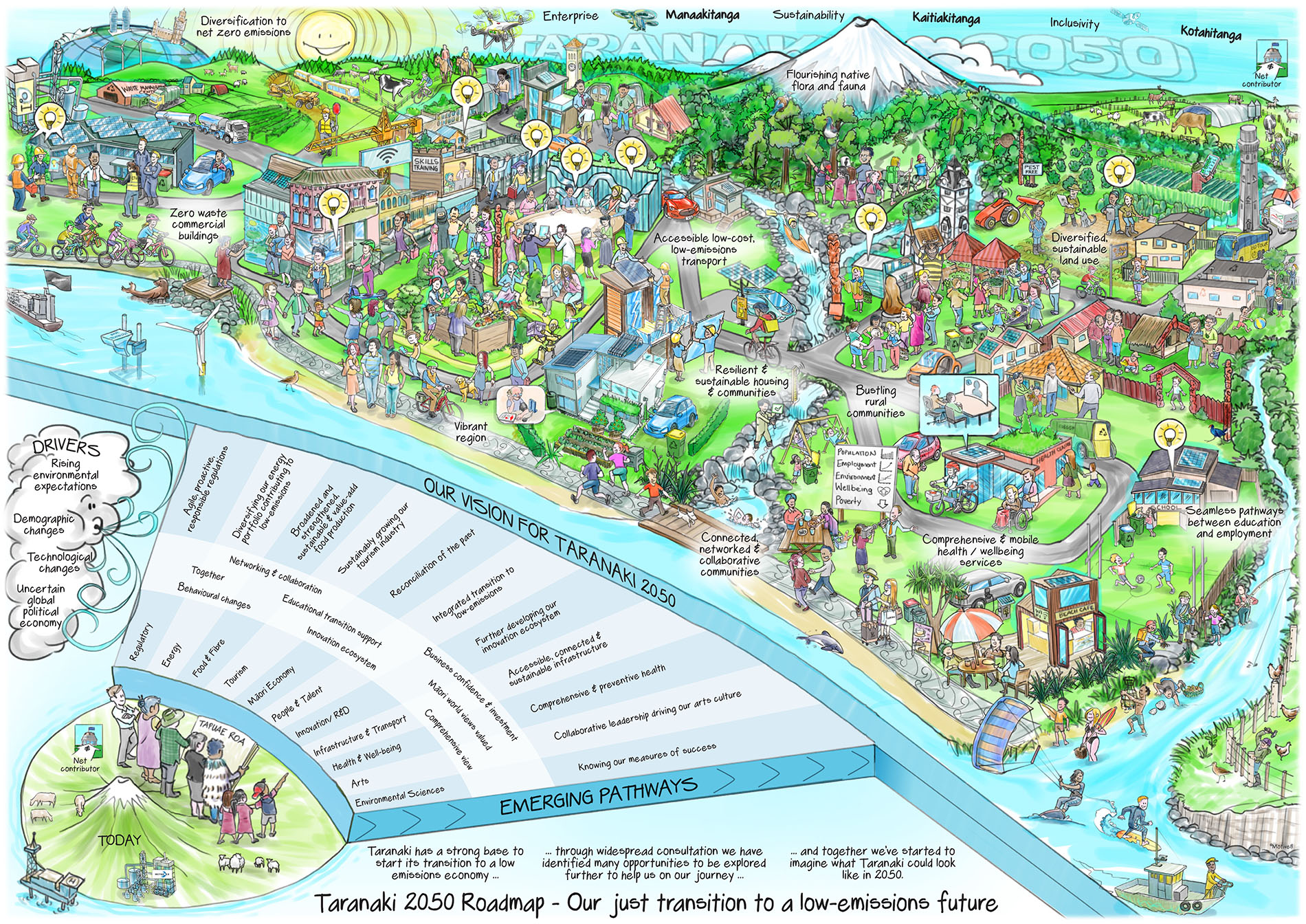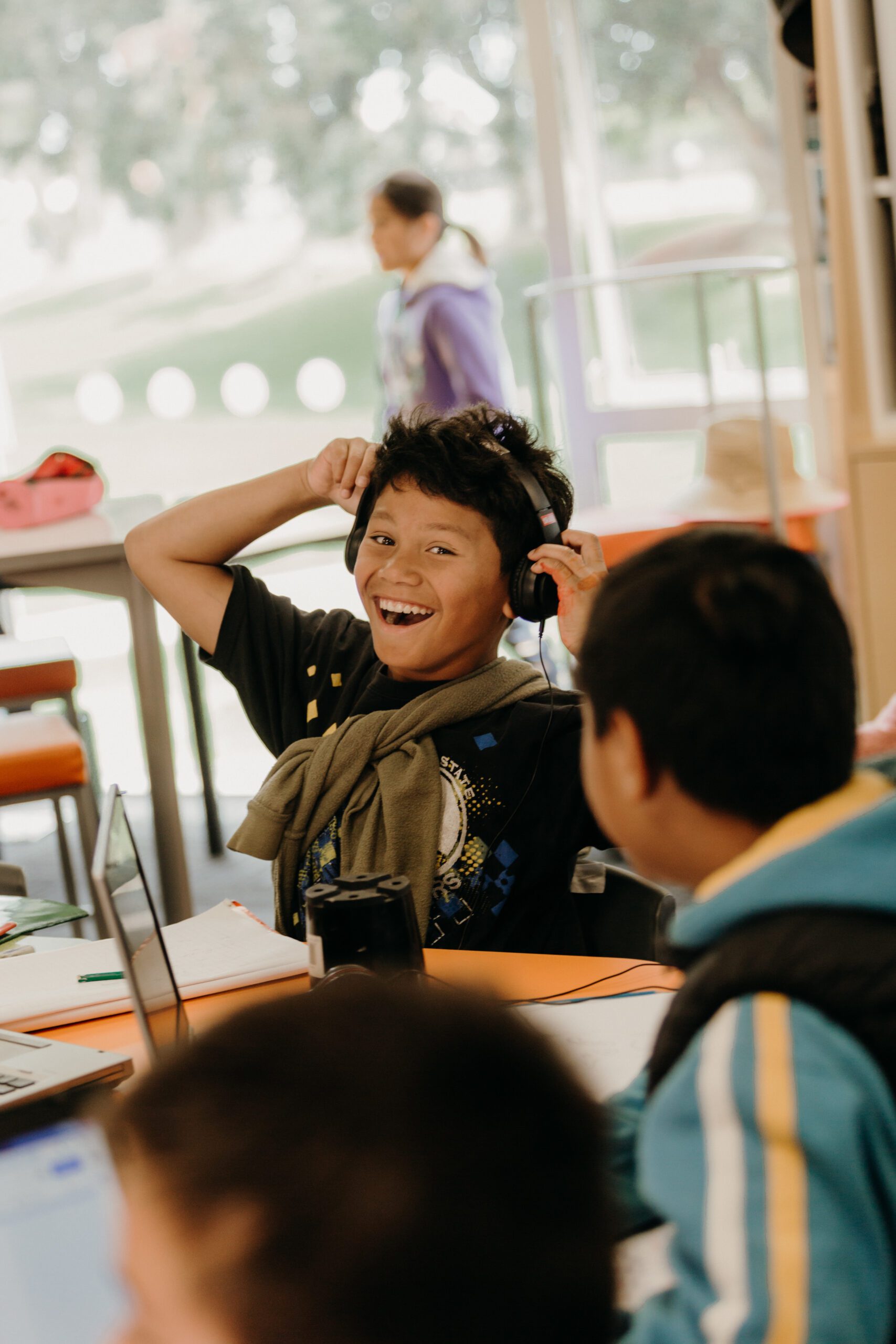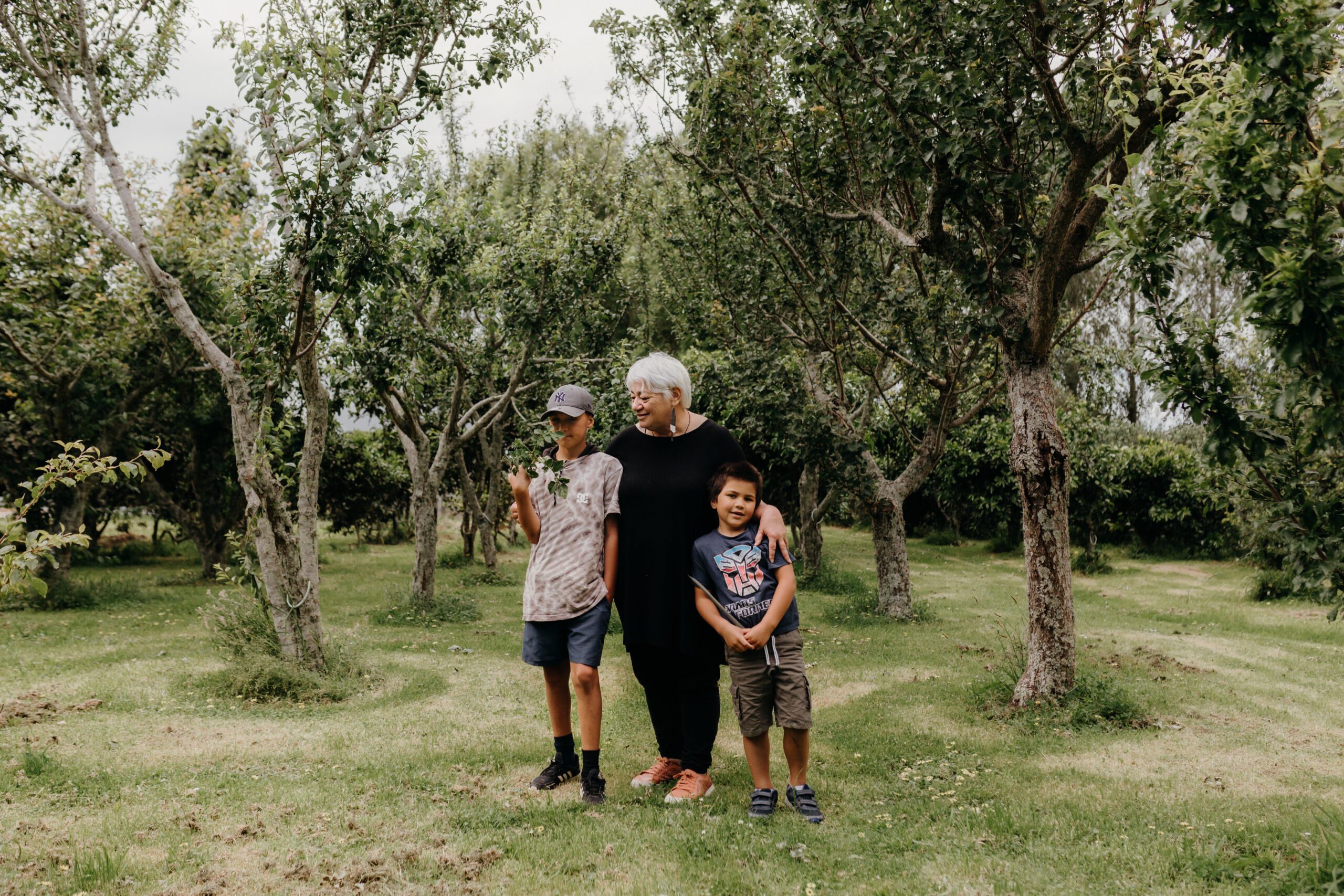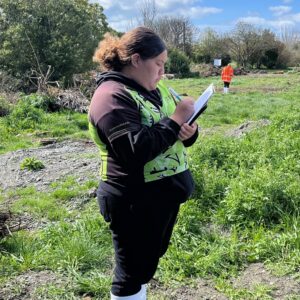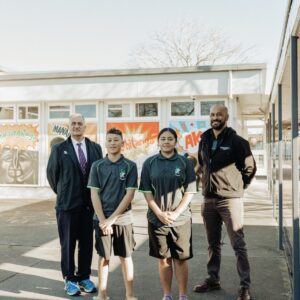In April 2018 Jacinda Ardern announced that no more permits would be issued for offshore oil and gas exploration. Onshore permits would continue for now, but the time had come for Aotearoa New Zealand to shift away from using fossil fuels.
“Unless we make decisions today that will essentially take effect in thirty or more years’ time, we run the risk of acting too late and causing abrupt shocks to communities and our country,” Prime Minister Ardern said to gathered reporters.
While Ardern framed the policy as a measured approach, others were not as calm. Opposition leader Simon Bridges declared that the Government was “taking a wrecking ball” to regional economies and Chair of the Taranaki Mayoral Council Neil Holdem described the announcement as “a kick in the guts”.
Initially, Taranaki communities experienced some anxiety. As reports noted, the province is the heart of the oil and gas industry, with twenty fields currently operating, both onshore and offshore. Around 4,300 people in Taranaki are directly employed in the industry, with other jobs reliant upon revenue from the sector. PEPANZ, the association that promotes the interests of petroleum exploration and production, put the cost of the decision to the Taranaki economy at $40 billion by 2050. They forecast that average household incomes would fall and up to 6 percent of local jobs would be lost.
Schools and early childhood centres across Taranaki felt the initial waves of concern. At Waitoriki School in Inglewood, Principal Teresa Jones noted that families were worried about an uncertain future.
“Families are concerned about potential job losses and are having to consider changes of careers or retraining,” she said. “Like anything that unsettles home, this impacts student learning, behaviour and wellbeing, which in turn influences the school culture.”
In response to the media and industry narrative, the Ardern Government reiterated that the change process was a long-term one. People in Taranaki were beginning a decades-long transition, rather than suddenly having their jobs taken from them.
“We have seen that happen once in the 1980s and we don’t want to see that again,” commented Prime Minister Ardern, referencing the last time a Labour Government undertook a major restructuring of the economy. That thorough deregulation, undertaken by the Lange ministry, was done at speed and created massive disruption, both economically and socially. Thousands of jobs were destroyed and entire communities were wiped out as industries closed. The damage was felt by an entire generation.
Prompted in part by history, but also by nervous Taranaki residents, the government committed to a “Just Transition” where the destructive impacts of economic restructuring could be avoided. No group would find themselves cast aside in the interests of the economy.
A “Just Transition” unit was established within the Ministry of Business, Innovation and Employment (MBIE) to oversee a smooth conversion from an emission-producing economy to a greener future. Its job is to build a partnership between government, unions, iwi, community groups, education and business to “make sure those who are most affected by a transition are given opportunities to change as the world does.”
The first visible sign of the policy in action was the Just Transition Summit, held in New Plymouth in May 2019. A glittering affair, the conference drew together all parts of the community and featured an announcement by the Prime Minister of $27 million in funding for Ara Ake – a Future Energy Development Centre in Taranaki. The centre will lead the development of clean energy technologies and help businesses create high-paying local jobs. Work is now underway researching wind and wave power, geothermal development and hydrogen-based energy.
“This is the right time to be launching into this space,” said Prime Minister Ardern at the summit. “Taranaki for some time to come will continue to be a key player in the oil and gas industry, but we must plan for the future because the future is upon us.”
Supporters of “Just Transition” point to numerous examples overseas, where partnerships have managed the closure of polluting industries while limiting damage to communities. One of the best-known examples is Germany’s move away from coal. Once the supplier of fuel to much of Europe’s heavy industry, the German coal industry is now slated for closure in accordance with the Paris climate accord. The last mine producing high carbon black coal closed in 2018, while brown coal production and associated coal-using plants will end in 2038.
At its height, the higher-polluting black coal industry employed 607,000 miners but was already in decline when the government announced the decision to close it down. In agreement with owners and unions, long-term plans were developed that aimed to keep everyone in work. Pits were closed progressively, and new jobs were created in the mining communities. New transport infrastructure and universities were built, waterways rehabilitated, and mine sites converted into parks, exhibition centres and museums. Older workers were able to retire on generous pensions. Not a single miner was sacked.
The plan to close the remainder of the industry, as well as Germany’s nuclear power plants, will see the country move to solar, wind, biomass and hydroelectric energy.
***
On the ground in Aotearoa, Venture Taranaki is driving the “Just Transition” process. Justine Gilliland, Chief Executive of Venture Taranaki, acknowledges that “transitioning is going to be a really hard journey for New Zealand and the world”, but believes deep community engagement is critical to success.
“It is about every single voice being heard,” she says. “It is also about a single voice not having more power, more say, than another voice.”
The voices of NZEI Te Riu Roa members have been some of those engaged in the “Just Transition” discussion. Barb Curran, a member of the National Executive, says that it is critical the union is part of any deliberation about climate change.
“Climate change is the most enduringly serious issue of our time and it’s going to impact all of our teachers, support staff and the children we work with,” says Curran. “We cannot care about those children without caring about the current and future impacts of climate change upon them. That’s why supporting a just transition in Taranaki and elsewhere is so important. We can’t just rely on the market to take care of our families.”
Tom Alesana, (Ngāti Kuia, Rangitāne o Wairau, Ngāti Apa ki te Rā Tō, Taranaki Tūturu, Hāmoa) a National Executive member, says that NZEI Te Riu Roa is well placed to bring a strong Māori voice to the discussion. In the past, Māori have suffered the worst effects of economic restructuring, he says, and points to the decimation of the Taranaki community of Patea during the 1980s.
“Back then Māori were not part of the conversation and so they were not part of the solution, so I applaud the fact that Māori are now being actively consulted and are taking part in planning the way forward. It’s vital that a Māori world view is at the table because we are talking about more than the economy,” says Alesana. “Māori view the environment as a living organism and take kaitiakitanga very seriously. When we advocate for the environment, we are upholding the life force of our ancestors.”
As part of the “Just Transition” process, Venture Taranaki held thirty workshops across the region where individuals and groups contributed ideas. There was also a day-long workshop where students from eleven schools engaged in a creative competition.
Gilliland describes the process as one of co-creation and the most visible outcome from the workshops has been the production of a 2050 Road Map: an infographic depicting a carbon neutral, green and prosperous Taranaki.
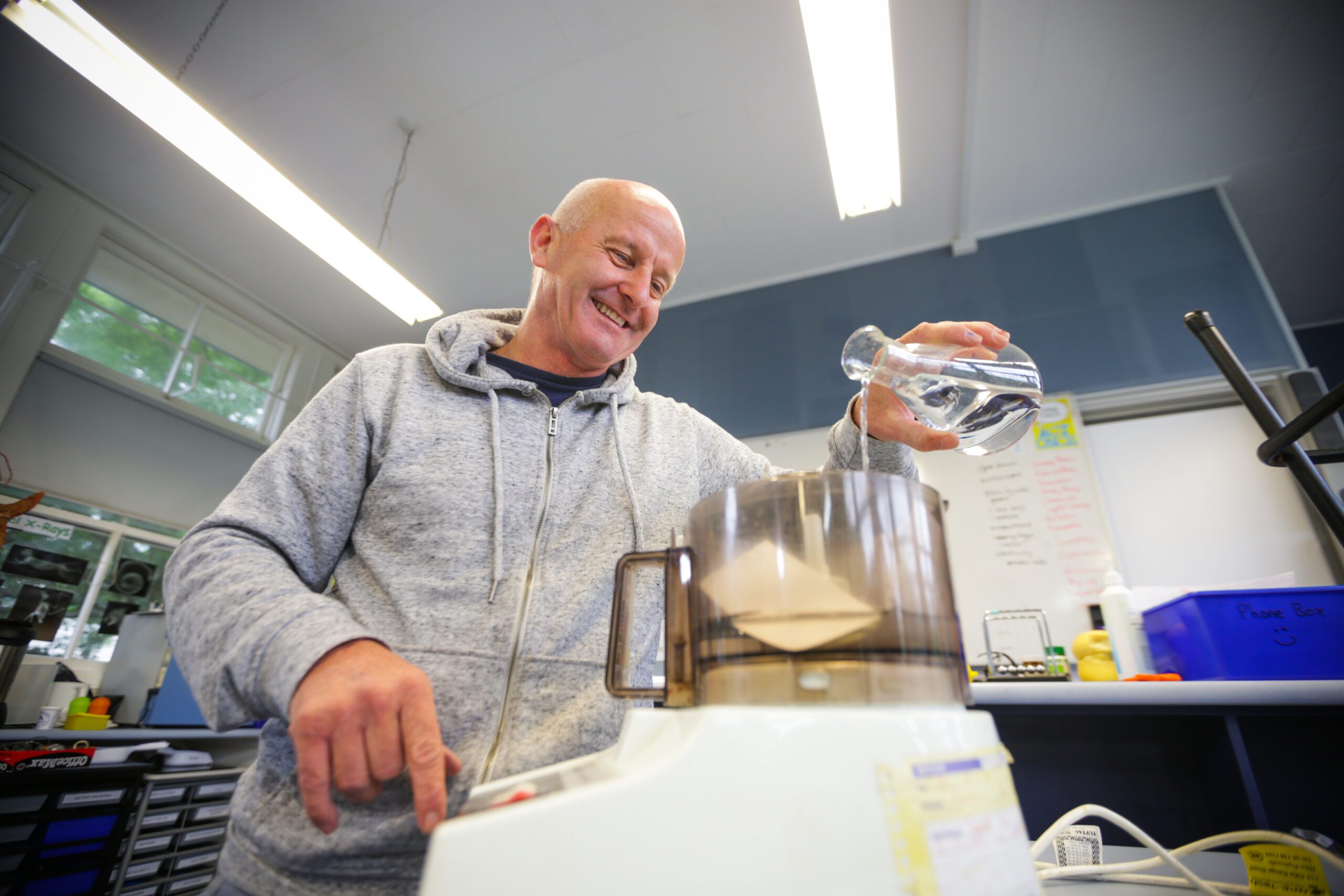
Pat Swanson, a specialist science teacher at Highlands Intermediate in New Plymouth, was an NZEI Te Riu Roa representative at the workshops. He believes the process has been valuable.
“The workshops helped to build a sense of what we might do differently. Sure, at times it seemed like we were talking pie in the sky, but 2050 is a long way off and progress is going to be gradual. I think there’s a change happening in the community and that people are beginning to think that Taranaki has an opportunity to lead the way.”
The roadmap identifies twelve pathways to the future, ranging from energy through to health and wellbeing, the Māori economy, the arts, infrastructure and travel. “Everyone has a part to play and no group is left behind,” says Gilliland.
Each of the twelve pathways now have an action plan detailing goals for the next three to five years. “That’s helped to give us a sense of confidence about where we are heading,” says Gilliland. “At the same time, we cannot minimise the challenge ahead of us. It is going to require a massive ongoing effort and considerable investment.”
“There’s a growing sense in this region that Taranaki can lead the way … schools are the ideal place to begin that discussion”
Sarah Roberts, a teacher active in Taranaki Energy Watch says “Just Transition” happened at a time when confidence in the oil and gas industry was waning.
“There’s been a lot of talk about the fact that there have been no big new finds of oil and gas. Several of the existing fields including Maui and Kapuni are quite old and in decline, so I think there’s been a sense for a while now that diversification is on the way.”
At Highlands Intermediate in central New Plymouth the impacts are being felt. “We have seen some families moving back overseas because of greater job opportunities and because of the uncertainty in the New Zealand oil and gas industry,” says Swanson. “For some locals working in the industry, there’s a sense that they may need to look for alternative career options.”
On the southern side of Mt. Taranaki, Teresa Jones says there has been a drop off in fundraising at Waitoriki School, probably because of nervousness surrounding the energy industry. “Directly and indirectly the oil and gas industry supports a lot of local families,” she says. “There’s a fear that the industry might be wound down before large-scale alternatives are developed.”
At the same time as schools offer support to children and whānau, they are developing curriculum responses. Most schools have long included climate change in teaching and learning programmes, but there is a general sense there needs to be a greater focus to match the times.
Swanson says there is an effort to build a greater awareness of sustainability issues into Highlands Intermediate’s science programme.
“We’re encouraging students to look towards an alternative future. There’s a growing sense in this region that Taranaki can lead the way and I think that primary and intermediate schools are the ideal place to begin that discussion,” says Swanson. “Students are always keen to look at different ways we can live our lives, whether it is around how we access our food and our transport networks, or how we power our homes.”

***
In Waitara – just fifteen minutes north of New Plymouth – Resource Teacher of Māori, Tiri Bailey is witnessing a growth of green activism at a community level and at Waitara East School where she teaches. She says that changes to the economy and the impact of Covid-19 have refocused hapū on their local environment and traditional methods of food production. She points to a growth of community gardens using the maramataka, the traditional Māori lunar calendar. Schools are partnering with whānau in predator-free programmes while engaging in kaitiakitanga around the health of streams, revival of wetlands and care of awa.
Waitara is a community that has been battered by economic changes in the past. In the 1990s and early 2000s, large numbers of young Māori left the area as industries downsized or were closed. Many emigrated to Australia. Years later, deprivation levels remain high in the town. While hapū and iwi are engaged with the “Just Transition” process, there is a grassroots response as well.
“There’s a sense that families and communities need to take more responsibility for their own wellbeing,” says Bailey. “People are looking after what we have got, and it is the job of schools to help in this.”
Justine Gilliland says that the involvement of educators in the “Just Transition” process has been especially important and will continue to be so in the future. Educators have a critical role in building citizens ready for the challenges of a changing world.
“Increasingly, our children need to have entrepreneurial mindsets so they can see the opportunities to make positive changes,” says Gilliland. “They need to be resilient, optimistic and have an analytical approach if they are to see the possibilities ahead and meet the challenges that will face them.”
Almost two years on from the Prime Minister’s announcement about offshore exploration in Taranaki, there is still an unsettled feeling on the ground. Locals spoken to by Ako acknowledge that the plan for a “Just Transition” provides the basis for a way forward, but point to considerable unease in the community. Some involved in the exploration industry feel that they have been unfairly cast as the villains in a political drama. Many of those approached for comment declined to participate for fear of offending others in their communities.
Teacher and activist Sarah Roberts has spent years debating issues around energy, and says that in a region where oil and gas permeate the community, open discussion is exceedingly difficult. It is one of the reasons why she believes that the conversation ought to be nationwide and for all ages.
“It needs to be talked about right across the nation, because what is produced in Taranaki is piped north and south and is consumed throughout the rest country. Climate change and the transition to a sustainable future is everyone’s issue.”
Roberts believes that, long-term, children will provide the solutions to the quandary of climate change.
“Most schools have long included climate change in teaching and learning programmes, but there … needs to be a greater focus to
match the times.”
“There’s a temptation, when we consider a just transition, to be very adult focused. But we also need to be taking a longer view and helping our children to understand their future in a world of climate change. We need to grow the presence of climate issues in the curriculum. That’s not just about teaching, it is also about support, because so much of the public discussion about climate change can make our young people feel the world is ending.”
She points to countries where the conversations have been had and local communities are taking responsibility for generating their own green energy, becoming self-sufficient. She believes that Aotearoa New Zealand can do the same. “We all need to join in because we all live on the same planet. And there is no planet B.”
Feature image: Artwork by tamariki from Waitara East School.
